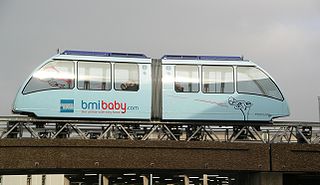What should be the aim of transportation development? Place-to-place mobility? Efficiency? Connectivity? Economic prosperity? Environmental sustainability? All of the above? All of the above.
It isn’t enough anymore, or so it would seem, just to be able to travel, move cargo from one location to another. That was fine for an earlier time – life today is more complex, the world more populated and those characteristics present challenges different from those before the days of automation. With ever greater numbers of people having broader and more varied wants, needs and interests, having a dependable, better-connected, more efficient, more environmentally sustainable and, perhaps above all else, safe transportation system, it is presumed, has become, over the decades, more and more important to more and more people.
And, humans should demand as well as expect nothing less. So, how do we get there?
Enter the Institute for Transportation and Development Policy (ITDP) and the University of California at Davis (UCD).
These two concerns on May 3, 2017 released to the world a joint press statement.
In the document titled: “New report: 80% cut in CO2 emissions if cities embrace 3 revolutions in vehicle technology: automation, electrification, and, most importantly, ride sharing” – “Analysis from ITDP and UC Davis shows 3R synergy provides 40% reduction in urban vehicle transportation costs globally by 2050, sharing and renewable energy sources critical to success.” (Note: “Revolutions” is what the “R” stands for in “3R”).
Elaborating further, the paired concerns in the press statement wrote: “As the transportation trends of passenger vehicle automation and electrification continue, new research concludes that adding extensive ride sharing to the mix could reduce CO2 emissions from all transportation sources around the globe by more than 80 percent. The report, ‘Three Revolutions in Urban Transportation,’ examined these three revolutions in urban transportation and found all three together could cut the cost of vehicles, infrastructure and transportation system operation by more than 40 percent.”
And, what are the three Rs? They are the “business as usual (BAU) scenario” and the “2 Revolutions (2R)” and “3 Revolutions (3R)” scenarios, respectively.
In elaborating ITDP and UCD explain:
- “Business-as-usual (BAU) scenario—Through 2050, we continue to use vehicles with internal combustion engines at an increased rate, and use transit and shared vehicles at the current rate, as population and income grow over time.
- “2 Revolutions (2R) scenario—We embrace more technology. Electric vehicles become common by 2030, and automated electric vehicles become dominant by 2040. However, we continue our current embrace of single-occupancy vehicles, with even more car travel than in the BAU.
- “3 Revolutions (3R) scenario—We take the embrace of technology in the 2R scenario and then maximize the use of shared vehicle trips. By 2050, cities have ubiquitous private car sharing, increased transit performance—with on-demand availability—and strengthened infrastructure for walking and cycling, allowing maximum shared trip efficiency.”
“The 3R scenario would also dramatically reduce the number of passenger vehicles on the road by almost one third, from 764 million currently to approximately 535 million in 2050. This is only one quarter of the business-as-usual and 2R scenarios which both result in 2.1 billion vehicles by 2050. Fewer vehicles, coupled with less vehicle travel, lessens the need for roadways, parking garages, and related infrastructure, opening up cities for more infrastructure that supports pedestrians and bicyclists.”
Related to this the ITDP and UCD offer: “As long as electric vehicles are mostly powered from low-carbon electricity sources and not carbon-intensive sources like coal or other fossil fuels—an underlying assumption motivating the electrification revolution—the 3R scenario would generate 0.7 gigatons of CO2 emissions worldwide annually by 2050, as opposed to 4.6 gigatons in the BAU scenario emissions and 1.7 gigatons in the emissions in the 2R scenario. Transportation costs would plummet, costing about $8 trillion annually in the 3R scenario, as opposed to $13 trillion in business as usual or $14 trillion in the 2R scenario.”
How realistic is all this? On this, the ITDP and UCD cite examples.
“Oslo, Norway’s capital, has embraced the importance of zero-emission vehicles. More than 30 percent of all new cars sold in the city are electric, a direct result of the government’s policies. There is no sales tax on electric vehicles, free parking, free tolls, bus lane access, and free transport on ferries. The government has also built more than 2,000 charging points within the city limits.”
(This is followed with several more relevant examples detailed).
Via the press statement, according to Lewis Fulton, the report’s lead author and a UCD Institute of Transportation Studies co-director, by 2050, two-thirds of the population will reside in cities. Development-wise, the ways that cities choose to grow now could make a world of difference tomorrow.
“‘We need to make sure that these cities of the future accommodate everybody, and the key is how the 3Rs reduce the number of cars and their smog,’” Lewis relates.
For more on this, go here.
To view a corresponding visual, go here.
Published by Alan Kandel

